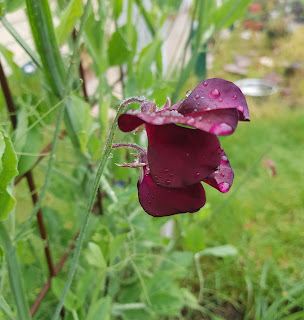Introducing a Grief Series at The Atlantic

These dark-red sweet peas are from my garden. They're this year's descendants of the ones I mention at The Atlantic . It's the first article in a planned series about grief, digging into the science around grieving. I write about my experience of severe grief, and why I started this project after my son, Adam, died. I unpack the myth of "five stages of grief" that's had a grip on popular imagination since the 1970s, and argue that we could be better informed about what lies ahead for most people who have lost someone dear. The evidence I write about briefly in that article is the first research collection at this blog, looking at studies on the course of grief. That was aimed at finding an answer to one of my burning questions in the aftermath of Adam's death: how long was the overwhelming despair likely to last? I hope others find the results of my search as helpful as I did. Best wishes, Hilda
